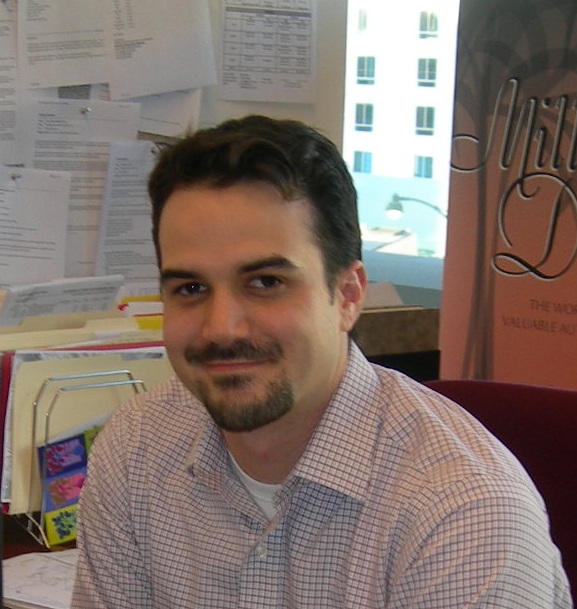Why do we work so hard on field trip programs? Scheduling logistics, paperwork, lesson plan development, docent training, etc. require a massive group effort. Is it because we can all remember field trips from our youth? Is it because an early museum visitor becomes a frequent museum visitor? Is it because teachers often use words like “actual,” “genuine,” “first-hand,” and “new,” when asked what helps their students engage and learn? As museums, we are uniquely positioned to provide students with access to the kinds of experiences highlighted by those key words and it is important that we do our best to serve these audiences and be more than merely a repository for authentic art or historical artifacts.
Teachers need to justify field trips by citing what standards will be met, and students are able to find relevance and connections between a field trip experience and curriculum content in the classroom. But another undeniable benefit to field trips is the intangible, sometimes un-quantifiable, experiential learning that takes place. My childhood memories of school field trips range from the dream-like (how did we end up at a dairy in West Texas?) to the detailed (Saturn’s moon Mimas looks suspiciously like the Death Star). These outings were highlights of the academic year; they exposed me and my classmates to new environments outside our neighborhood school, and made an impression on our young minds that helped us learn and think in new ways for the rest of our lives.
For almost the entire history of the Petersen Automotive Museum in Los Angeles (founded in 1994), the school field trip format has been essentially the same: a walking-talking docent-led tour of essentially the entire museum with special emphasis on teacher requests and interests. We host approximately 15,000 students of all ages each year and all our field trips are led by volunteer docents, 95% of whom are retired to semi-retired men. We have many docents who have been with the museum since the beginning and have a certain way they like to structure their tours. Such long-term habits are very hard to break and, overall, our docents generally prefer to tour older students and adults, who can interact on a more advanced level. Many of our docents do not engage as well with younger students (grades K-2, for example) who seem less focused and less able to comprehend the concepts behind some of our exhibits. Various efforts to provide refresher training on pedagogy and inquiry-based touring have met with some success but the difficulties surrounding K-2 tours were a frequent area of frustration.
 A Petersen docent tours a class through the historic Streetscape exhibit, showing one hundred years of Los Angeles and the automobile.
A Petersen docent tours a class through the historic Streetscape exhibit, showing one hundred years of Los Angeles and the automobile.
For myriad reasons, we would neither forbid K-2 groups to visit nor would we turn them loose en masse and unstructured. So Petersen education staff decided to upend the touring status quo and create a program that would facilitate more positive interactions between our docents and our K-2 groups and also provide a more meaningful experience for the students themselves. Our goal was to offer a program that is at an appropriate comprehension level, inquiry-based, and allows students to exercise their imagination through hands-on art projects. If those aren’t the core tenants of museum education, I don’t know what are.
The process of radically restructuring our 17 year-old tour experience for K-2 groups began in the summer of 2011 and continues every day. We have learned so much along the way about tour logistics, volunteer management, teacher collaboration, and how children learn in our museum. Some of the challenges we expected to face never surfaced while new difficulties show up out of nowhere.
We are proud of the work we’ve done at the Petersen and feel that other museums may benefit from seeing our program development process from the ground up. But our program is still in its early days. K-2 school programs at our cross-town neighbors, the Autry National Center in Los Angeles have been going on for years! They offer a wide variety of hands-on tours and activities designed specifically for targeted age groups, especially K-2. Their organization and audience is quite different than that at the Petersen and I think comparing our two programs will present you, our museum education colleagues, with a broad range of possibilities to explore in your institution.
And what about the teachers? THEY are who we have to convince to visit in the first place and to return as often as possible. What input do teachers have on these programs and what suggestions would a professional classroom teacher have for us in the museum field? Come and find out at the session “Gearing Up for New Audiences: Preparing Your Site, Staff, and Volunteers for K-2 Field Trips” on the afternoon of Tuesday, October 23, in Palm Springs!
Clayton Drescher has a background in archaeology, visitor studies, and museum education. He has been with the Petersen Automotive Museum in Los Angeles for more than six years and has focused the work of the Education Department on finding new ways to engage diverse audiences with automotive history.










Add new comment